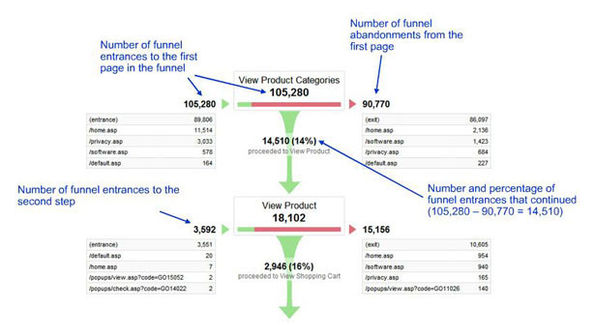5 ways design and marketing can work together better
Juliet Pena looks at why the design and marketing departments often clash - and suggests ways to improve working relations between the two 'sides'.
The best marketing campaign is a clean, simple idea that is beautifully executed. But what it won't reflect are the backroom battles that went into it, particularly the frisson that tends to exist between marketing professionals and designers.
That friction is understandable. While marketers have tangible, measurable objectives, designers often have a 'vision' that's not objectively measurable in any way.
This disparity between these ways of working, thinking and existing will inevitably lead to tension. Compromise can usually be reached, but usually not without the odd diva tantrum, showdown or (at the very least) passive aggressive email. In this article I'll look at this classic love/hate relationship in more detail, examining where the tension stems from and what can be done to diffuse it...
- Check out all our 'Industry Insight' posts here
Problem 01: Differing roles and pressures

The role of the marketer: Marketing is all about working within specific constraints, which can be financial, time-related and resource-dependant. Marketers also tend to limit the scope of their briefs so that specific demographics are targeted without too much 'wastage'. The science of marketing tends to be grounded in research and works towards a measurable goal, which is usually financially-based. Essentially it’s a rigorously structured framework geared towards delivering results via a positive customer experience.
The role of the designer: The job of creating that customer experience falls to the designer. They are limited by the same constraints as the marketer; however, comparatively they will be less tuned in to the tangible results of a campaign and more interested in aesthetics and user experience. The best designers will include themselves in consumer research; in their pursuit of the aesthetic they should always keep their focus on meeting the needs and expectations of their audience.
Problem 02: Arguments over amendments

In an agency context, the marketer will tend to be the direct point of contact for a client. As such, should a client demand changes to design work, it will be the marketer who passes these change requests along to the designer. The phrase 'shooting the messenger' can be painfully relevant in situations like this. Changes are sometimes not well-received by designers, but on the flipside they can be poorly communicated by marketers. Welcome to the perfect storm.
Amends are usually the kindling that can result in blazing rows between marketers and designers, especially if they are not well-communicated. Marketers often make the assumption that designers are blinkered by creativity and lack of practical focus, while designers may resist amends on the grounds that the amends in question compromise the quality of the work they have produced.
Daily design news, reviews, how-tos and more, as picked by the editors.
Okay, that's enough about the problems. Let's look at some solutions...
01. Focus on the consumer

Rather than thinking of design and marketing as yin and yang, both departments should be focused on understanding the consumer they are targeting. There is an enormous amount of value to be mined from both disciplines bringing their points of view and expertise to the table right at the beginning to ensure this actually happens.
02. Subvert the hierarchy

It’s wrong to assume that the working process between marketers and designers has to flow from the former to the latter in a linear fashion. Less linear, hierarchical structures can often lead to the best results. Indeed, design can often inspire marketing rather than simply take direction from them and a designer’s freer way of thinking can unearth alternative ways of meeting a target.
Simply spelling this out in a meeting can be enough to bring about a shift of attitude - from an adversarial outlook to one of positive co-operation. You'd be amazed how much a bit of praise and mutual respect can make to working relationships...
03. Bring designers into client discussions
There's nothing more annoying than the marketing department dumping a detailed brief on the designer's table, saying "This is what we've agreed with the client". Marketers sometimes feel they need to stay 'in control' of client relationships, but this is a false economy from every angle. Involving designers in the discussion at the outset means they'll better understand what the client wants the design to achieve, and will be better placed to ensure that happens.
04. Create an orderly process

One of the most jarring things about amendments to designers' work is when they seem to be arbitrary and impulsive. To avoid this, ensure all feedback and amends are well-documented and not passed along in a way that is casual or open to misunderstanding.
Creating a formal process for amendments may seem over the top, but should arguments arise it's good to be able to look back at the dialogue that’s led to them. A more clearly understood procedure will also streamline things in a way that leads to less duplication of tasks and less wasted effort, ultimately leading to less stress and better relationships all round.
05. Acknowledge your differences
As well as marketing and design working together more closely towards a common goal, it's also important to recognise and indeed celebrate their differences. That may sound like a contradiction of the previous points, but if you want to keep design fresh, unrestrained and creative you do need to unshackle it and isolate it from an obsession with statistics like audience reach and conversions.
In other words, it’s good to ensure designers are clued-up when it comes to these goals, but going too far down this path with undermine the specific skills of both specialties. As with most things in life, it's a balancing act - but get the balance right and you'll reap the rewards in bucketloads.
Words: Julie Pena
Julie Pena writes on behalf of printerpix.com, an American photo book printing company. Read Printerpix reviews here.
Liked this? Read these!
- The ultimate guide to designing the best logos
- Useful and inspiring flyer templates
- The best 3D movies of 2013
Add your thoughts to our comments section below...

Thank you for reading 5 articles this month* Join now for unlimited access
Enjoy your first month for just £1 / $1 / €1
*Read 5 free articles per month without a subscription

Join now for unlimited access
Try first month for just £1 / $1 / €1

The Creative Bloq team is made up of a group of art and design enthusiasts, and has changed and evolved since Creative Bloq began back in 2012. The current website team consists of eight full-time members of staff: Editor Georgia Coggan, Deputy Editor Rosie Hilder, Ecommerce Editor Beren Neale, Senior News Editor Daniel Piper, Editor, Digital Art and 3D Ian Dean, Tech Reviews Editor Erlingur Einarsson, Ecommerce Writer Beth Nicholls and Staff Writer Natalie Fear, as well as a roster of freelancers from around the world. The ImagineFX magazine team also pitch in, ensuring that content from leading digital art publication ImagineFX is represented on Creative Bloq.
